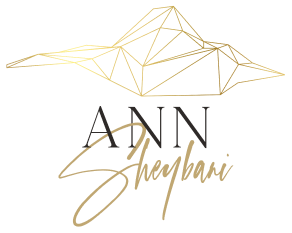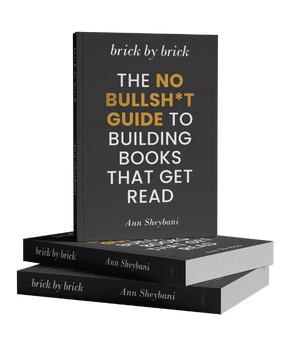It sounds so easy, right? Take the transcripts from your course–you know, the ones that accompany your video tutorials– organize them into chapters, throw in a few extra case studies, and call it a day. Done and dusted, as the Irish like to say. A book in a weekend, max. No sweat, no tears, just repurposing at its best…
Except, creating a book from a course is not exactly as easy as that. Mostly because a book has to follow a bunch of rules so the reader feels like they’re in the right place and trusts that the author has control over the material, and the experience they’re about to present.
For you, the author, that means stitching together your course material and associated stories into chapters. These chapters must follow a certain formula so the reader can actually track your material in that format.
God knows, you can break your hour-long videos into 5-minute “mini chapters” for the sake of consume-ability in a course, but do that in a book, and you lose the flow. Suddenly you’ve got an ineffective, unreadable choppy mess. And there goes your reader’s desire to explore working with you in a deeper way.
The design of a framework book–and that’s what a book that walks a reader through a series of steps to get a particular result is called– is to establish rapport, intimacy, and authorial credibility at the outset, then to demonstrate your unique methodology for solving a very particular problem.The reader will turn pages as long as they can see that your framework applies to their situation. They want to know precisely what they can expect by way of desirable outcome if they follow the recipe you’ve laid out in your book. They also want to know that you’ve got options available if they need further support.
A framework book, by the way, doesn’t always have to follow—step-by-step–the course framework to the letter, or even cover all the modules.
Examples:
Dayna Abraham, author of Calm the Chaos, deviated from her course framework. Because no one wants to read a 500+ page book, particularly parents of challenging kids, she eliminated at least two of her modules.
Kelly Higdon and Miranda Kelly, authors of Therapist Burnout, deviated from their Business Bootcamp for Therapists course. If they’d turned their whole course into a book, it would have run 700+ pages. (Hello MBA in a box!)
Jeff Walker, author of Launch, used only a fraction of his course materials to build his book. The original version of his book came in at 189 pages, the new and expanded version came in at 312 pages because he added three new chapters and a slew of new case studies.
If you were to model a book that captures the essence of a course framework, one that doesn’t overwhelm readers or eliminate their desire to go deeper by taking the related course, you’d be well served by modeling Launch.
So, how might you model Launch? In particular, how might you organize your content into satisfying chapters that keep the reader engaged and turning pages?
Let me give you a cheatsheet of sorts.
Table of Contents of (original version) Launch in terms of what each chapter covers and chapter length (Most are not the names of the actual chapters but an overview of what the chapter is about):
A Note to the Reader: What this book will do for the reader, authorial expertise, how to read this book (2 pages long).
Ch 1: Expert positioning story/identifiable problem: 13 pages long with 6 sub-sections, 1 long list of the types of businesses this formula/methodology works for
Ch 2: Overview of formula: 16 pages long with 11 sub-sections, 2 short numbered lists. Enter with case study…2 pages then 2 more pages spelling out launch formula using example. End chapter with invitation to see bonus case studies.(Opt-in to identify readers)
Ch3: Why you need a list: 18 pages long with 8 sub-sections, 2 short numbered lists, 4 screenshots, 1 math example, reference to bonus page. Enter with personal story for 2 pages, then straight into content. Harken back to case study of chapter 2 to keep the book flowing and linked.
Ch 4: Sideways Sales Letter: 11 pages long with 3 sub-sections, 1 picture. Enter with personal discovery of SSL. Half page, then definition of the thing. After 5 pages, there’s a 7-page case study focusing on the use of sideways sales letter in the subject’s business.
Ch 5: Mental Triggers: 12 pages long with 2 sub-sections, 1 with long-form numbered list. Product Launch Formula history, followed by teaching of content. Couldn’t teach all, so readers invited to go to the bonus for more. No case study.
Ch 6: Shot Across the Bow: 12 pages long with 3 sub-sections, 2 of which are long-form numbered. Picture. Example copy. No stories, just dive right in to the teaching.
Ch 7: Prelaunch and selling people what they want: 15 pages long with 9 sub-sections, 3 numbered lists, picture. Enter with case study for 3 pages, then gives the primary recipe of PLC videos. Hook to what’s coming next…open cart.
Ch 8: Launch: 15 pages long with 11 sub-sections,1 with long-form numbered list, picture, example copy. Enter with case study for 3 pages (Invitation to see full interview of this case study on bonus page). Exit with hook, how you can build a $$ empire with Seed Launch, which is covered in the next chapter. 1 takeaway line with ….
Ch 9: Seed Launch: 13 pages long with 6 sections. Enter with 2.5-page case study. Teach content. One line at end of chapter to lead into next chapter framed as a secret for building wealth.
Ch 10: JV Launch: 12 pages long with 6 sections. Enter with 3-page personal story that leads to lesson. Reference to bonus page. No case study. Ends with a single hook line of great promise that gets readers turning the page…
Ch 11: The business launch formula (creating a business from a launch): 12 pages long with 9 sections, 1 with six #keys. Enter with 3-page case study, follow with mention of previous case studies, going just a bit deeper on their business evolution. Straight into the keys of a business launch formula. No hooky chapter end.
Ch 12: Business principles to consider: 11 pages long with 10 sections. Basic business 101 stuff, some of which seeds the need for doing this stuff in a group with support. No stories or case studies. One line ending about the upcoming chapter …
Ch 13: Basic philosophy of work and life, more personal story to ground the reader in desired outcome: 14 pages long with 13 sub-sections. (This chapter was probably originally written as part of the previous chapter but that chapter got too long.) More philosophy. Broad brush strokes. Seeding of other offerings. Enter with personal story, more personal history so you can see how relatable author is. You can have this too. Ends with short case study, less than one page and a prompt to go to bonus page.
Ch 14: CTA for reader: 6 pages long with 6 sections. Reiteration of why this framework works. How this stuff evolves over time. Personal supporting story. More or less what to expect when you get going. Invitation to write to author at address to tell him your success story, which is a great lead capture.
Let’s go back and look at what we’ve got. Each chapter is comprised of certain elements. A pattern or a formula has been established so the reader knows how to read the book and what to expect. (Readers like this.)
The elements of each chapter:
Mid-length chapters, roughly 13 pages long, give or take.
Enough subtitles that bridge concepts and make it easy for the reader to track the material.
Case studies that support a concept and dramatize the kind of people that benefit from the workshop/course. Roughly 3 pages long. (Not in every chapter, but in most)
Numbered lists or #keys to eliminate the need for too much verbiage. (Not in every chapter, just where it makes sense.)
Screenshots or boxed examples
Pictures
One-line hooks at the end of the chapter so the reader is curious enough to turn the page.
Personal stories that allow us to know, like, trust, and respect the author.
Calls to the bonus page for relevant material (not in every chapter, but in the majority)
Here’s the long and short of it…
There are certain rules to framework books (prescriptive non-fiction) and if you want to defy those rules because they’re inconvenient, your reader will not like it, even if they can’t explain why. You may like super short “chapters” in your course, but framework books are not typically built that way.
Look, I hate rules, I really do. Don’t tell me what to do! But…sometimes rules keep us from creating a hot mess when we don’t understand the game. So, by all means, be innovative, but don’t buck the formula just because it’ll take work you’d rather not invest.

